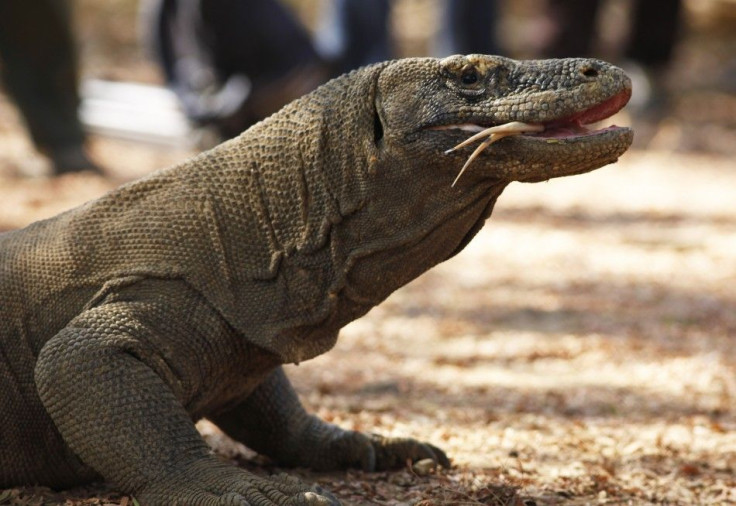Komodo Dragons: Dangerous Prehistoric Monsters Miraculously Living In The Modern World

Two park rangers in Indonesia were attacked and bitten Tuesday by a giant Komodo dragon -- the largest lizard on the planet and one of the most dangerous of all creatures – which wandered into their office.
The Jakarta Post reported that a police officer and an employee at the Komodo National Park on Rinca Island, East Nusa Tenggara, in eastern Indonesia are now recuperating in a hospital in Bali, hundreds of miles away.
Ahmad Main, the police officer, received 41 stitches for wounds to his legs, while Usman Li, the park employee, got 42 stitches for his troubles. Their lives had been saved by other park officials who were able to chase the six-and-a-half-foot dragon away.
It could have been much worse.
The Komodo – who have existed for millions of years, but have only been known to Western science since 1911 – can grow to a length of almost 10 feet, have sharp teeth and emit poisons from their glands that can lead to paralysis.
Fewer than 4,000 Komodo remain in the world – and they all reside on a few islands on the eastern parts of Indonesia.
BBC reported that, protected by international conservation laws, the endangered reptiles typically feast on big mammals, smaller reptiles and birds – but have also been known to assault and kill human beings.
Bali-Komodo Tours, a travel agency that arranges trips to eastern Indonesia, warned potential visitors: “A fully grown lizard can easily weigh up to 165 kg [370 pounds]. The sight of a Komodo dragon can be fearsome with its huge, wide jaws, stump-like muscular legs and pointed, spiky claws. They are carnivorous and feed on live deer, goats and wild pigs. They are venomous and can kill even humans.”
National Geographic went a little further, saying the dragons "will eat almost anything… even large water buffalo."
The famous Pulitzer Prize-winning journalist Malcolm W. Browne described the Komodo as the world’s “ugliest and most dangerous lizard. … Some would say that this unprepossessing creature would not be missed if it were to become extinct.”
The Komodo dragon reigns like a cruel king on the islands it inhabits since it is the top predator – one reason for the lizards' gigantic size is that, by living in isolation, they have no competing predators to challenge them.
The creature is a patient, unyielding, remorseless killer.
“Animals that escape the jaws of a Komodo will only feel lucky briefly,” NG wrote.
“Dragon saliva teems with over 50 strains of bacteria, and within 24 hours, the stricken creature usually dies of blood poisoning. Dragons calmly follow an escapee for miles as the bacteria takes effect, using their keen sense of smell to hone in on the corpse. A dragon can eat a whopping 80 percent of its body weight in a single feeding.”
Despite their eons-long dominance, the Komodo population has declined since a “dearth of egg-laying females, poaching, human encroachment, and natural disasters has driven the species to endangered status,” NG added.
But the sheer ferocity of the lizard (and its anachronistic size) has made the Komodo and its home islands tourist attractions for Indonesia.
Still, their future, like that of many other endangered species, remains in doubt.
“Conservationists say the animals have the most restricted geographic range of any large predator, and that poses a risk because a volcanic eruption or an islandwide fire could prove devastating,” the Smithsonian Institution wrote, adding that while Komodo populations remain stable and healthy on Komodo and Rinca islands, their numbers are declining on the smaller islands.
But one of the world’s leading experts on the creature, the late herpetologist Dr. Walter Auffenberg, told the New York Times that he didn’t think the Komodo dragon would disappear any time soon.
"They don't seem to be disturbed by the frequent earthquakes in the region, and volcanic eruptions may actually help them," he said. "Volcanoes spread toxic ash and kill the plant food needed by local deer and other grazing animals. The dragons then get fat, feeding on the carcasses of animals that died of starvation. Komodo dragons are great survivors."
© Copyright IBTimes 2024. All rights reserved.





















